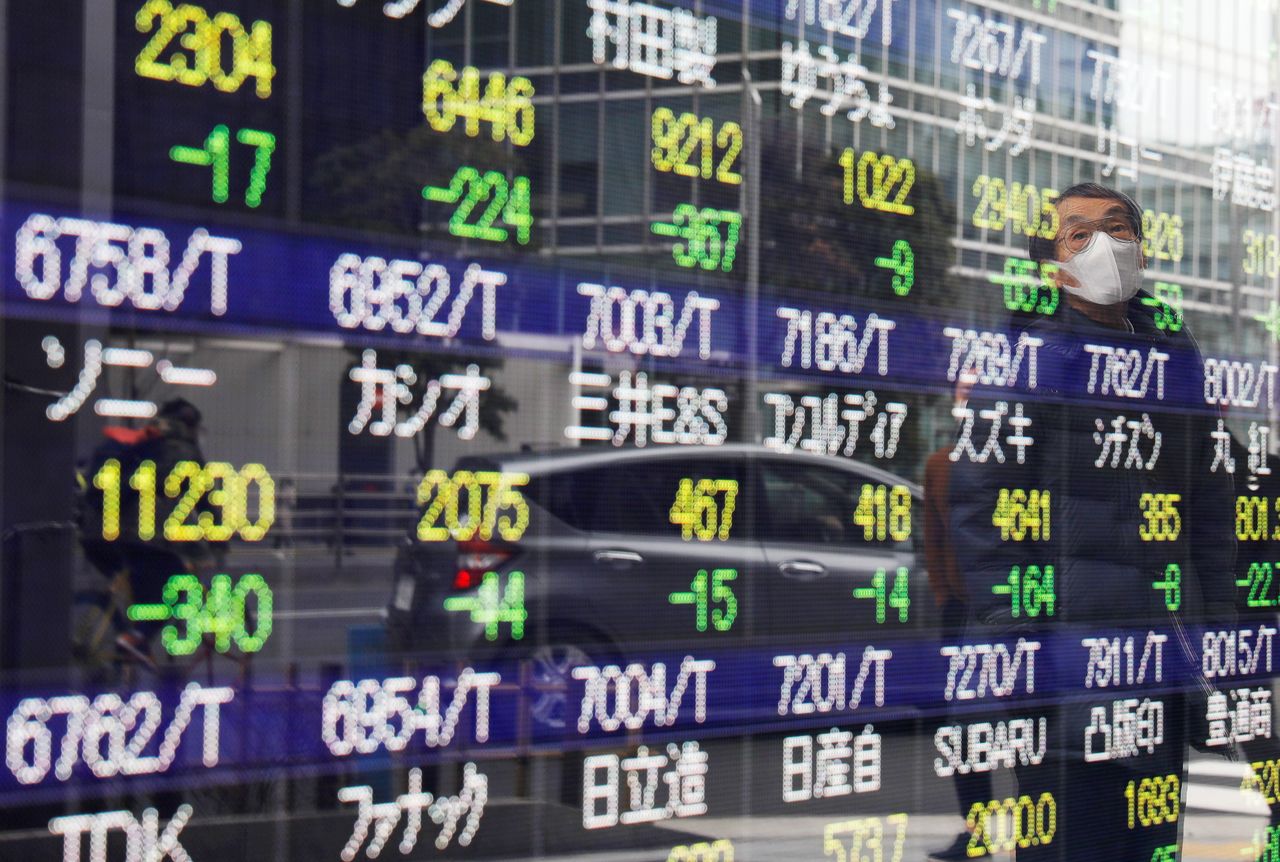Caution prevails in world markets ahead of Fed
Newsfrom Japan
Economy- English
- 日本語
- 简体字
- 繁體字
- Français
- Español
- العربية
- Русский

FILE PHOTO: A man is reflected on a stock quotation board in Tokyo, Japan February 26, 2021. REUTERS/Kim Kyung-Hoon
By Dhara Ranasinghe
LONDON (Reuters) - Caution descended on markets on Wednesday with world stocks holding below recent record highs as investors waited to see whether the U.S. Federal Reserve would signal a faster path toward policy normalisation than previously expected.
The U.S. central bank ends a closely anticipated two-day meeting later in the day, after a sharp rise in U.S. Treasury yields this year on expectations for stronger growth and inflation.
The Fed is expected to forecast that the U.S. economy will grow in 2021 at the fastest rate in decades. But investors who expect rosier projections to translate to any change in monetary policy will probably be disappointed.
“This is one of the most important Fed meetings we’ve had for some time and the impact will be felt across asset classes,” said Seema Shah, chief strategist at Principal Global Investors.
“Markets are hoping for reassurance from the Fed that rising bond yields are not something to worry about, and that takes a bit of steam out of the bond market.”
Before the Fed statement at 1800 GMT, calm prevailed across world markets.
MSCI’s world equity index was down 0.1%, but keeping last month’s record highs within sight.
European shares were a touch softer, while in Asia, an index of regional equities excluding Japan pulled back 0.4%. Japan’s Nikkei 225 closed flat.
There was some good news for AstraZeneca as Australia’s pharmaceutical regulator said the rollout of the company’s COVID-19 vaccine would continue, even though many European nations have paused vaccinations to investigate reported side-effects.
U.S. stock futures pointed to a flat open on Wall Street, after the S&P 500 lost 0.16% on Tuesday.
DOVISH?
Benchmark 10-year Treasury yields were a touch higher at 1.63%, holding near 13-month highs reached on Friday. They have risen 72 basis points so far this year. That compares with a 24 bps increase in German peers and a 7 bps rise in Japanese borrowing costs.
Inflation expectations have also ticked higher with the break-even rate on 10-year Treasury Inflation-Protected Securities (TIPS) on Tuesday rising above 2.3% for the first time since July 2014. The break-even rate for 30-year TIPS hit 2.24%, the highest since September 2014.
Graphic: Tolerated Inflation Hump? - https://fingfx.thomsonreuters.com/gfx/mkt/xegpbgaedvq/tolerated.PNG
“We expect (Fed Chair Jerome) Powell to note the FOMC has the tools to intervene if the bond market becomes disorderly or constrains the economic recovery,” analysts at Commonwealth Bank of Australia wrote.
“But we expect Powell to push back against talk of policy tightening because of the large amount of labour market slack ... U.S. bond yields and the U.S. dollar could jump if the FOMC’s post‑meeting statement and Powell’s statement are not deemed dovish enough.”
An index tracking the dollar against six major peers was around 91.92. The euro was weaker on the day at $1.1892. The dollar was up about 0.1% at 109.13 yen.
Currency market caution may extend all week, with the Bank of England meeting on Thursday and the Bank of Japan wrapping up a policy review on Friday, in which it may phase out a numerical target for its asset buying.
Elsewhere, oil prices slipped for a fourth day as concern about weaker demand in Europe outweighed an industry report that showed U.S. crude stockpiles unexpectedly fell last week.
Brent crude futures fell 27 cents to $68.12 a barrel and U.S. crude futures slipped 14 cents to $64.65.
(Reporting by Dhara Ranasinghe; Additional reporting by Kevin Buckland in Tokyo; editing by Larry King)